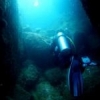Move over chainmail and Kevlar: The dawn of fish scale armor?
-
Topics
-
Latest Update
-
2
-
0
Больше трафика без лишних затрат
Контекстные ссылки – мощный инструмент SEO. LinkBuilder подбирает только проверенные площадки, где ссылки https://linkbuilder.com/ru/contextual выглядят органично и естественно. Это повышает доверие поисковых систем к вашему сайту и приводит новых посетителей. Продвижение без накруток и санкций – только честные методы! -
0
Wts 3ft tank with cabinet
Soild builded white cabinet fishtank with Soild wood supported with thick black colour silicone overall condition 8.5/10 Only used it for fresh water purposes ( never used for salt water at all ) Glasstank Dimension L90xH60xW45cm ( 10mm glass thickness ) Sumptank Dimension L76xH40xW43cm Tank currently still running with fresh water with canister filter piping all are dismantled buyer need to reinstall it additional one more hole for the overflow ( see picture ) Glass Tank with sumptank and tank cover + cabinet goin with powerful jebao DCT6000 ( just tested see video ) Self collect only at depot road $550 20250228_105757.mp4 -
5
WTS various corals at good prices.
Sharing a LFS photo of C1. Bought it as Glittering Rampage Chalice @ $120 from Hai Yang. -
5
WTS various corals at good prices.
Clearing another batch of corals + some left overs.
-







Recommended Posts
Join the conversation
You can post now and register later. If you have an account, sign in now to post with your account.